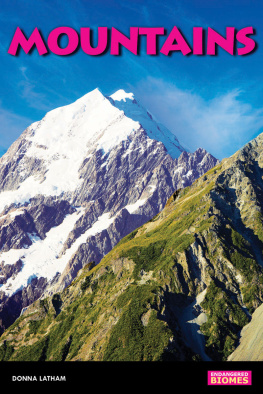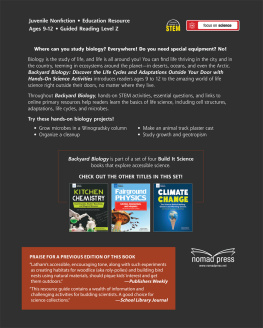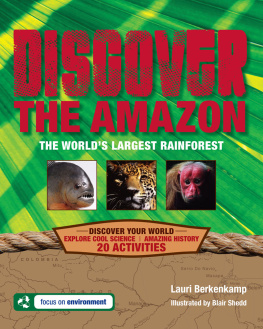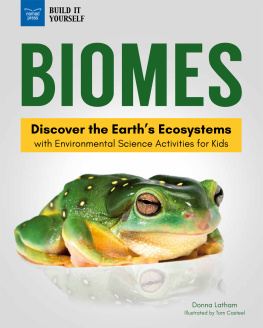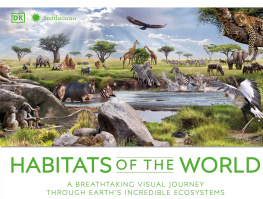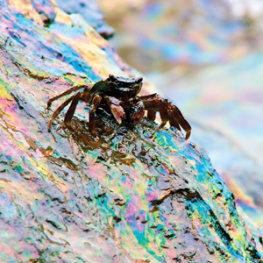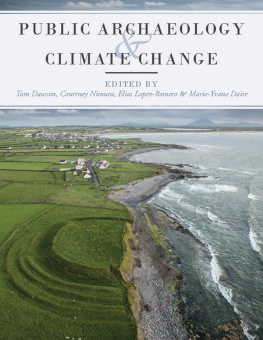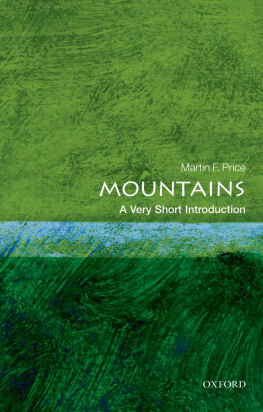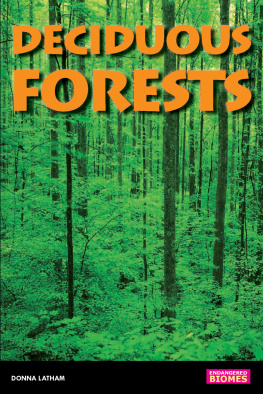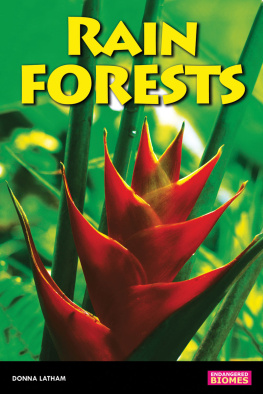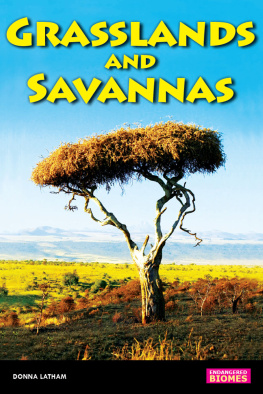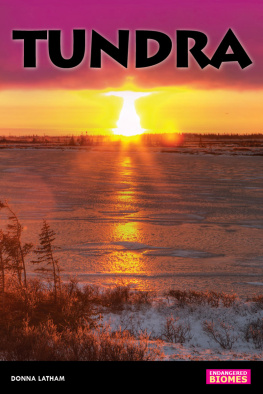
Nomad Press
A division of Nomad Communications
10 9 8 7 6 5 4 3 2 1
Copyright 2011 by Nomad Press
All rights reserved.
No part of this book may be reproduced in any form without permission in writing from the publisher, except by a reviewer who may quote brief passages in a review. The trademark Nomad Press and the Nomad Press logo are trademarks of Nomad Communications, Inc.
Printed by Regal Printing Limited in China,
June 2011, Job Number 1105033
ISBN: 978-1-936313-52-5
Educational Consultant, Marla Conn
Questions regarding the ordering of this book should be addressed to
Independent Publishers Group
814 N. Franklin St.
Chicago, IL 60610
www.ipgbook.com
Nomad Press
2456 Christian St.
White River Junction, VT 05001
www.nomadpress.net
Image Credits
Corbisimages.com/ Paul Souders, cover; Stringer/Indonesia/Reuters/Corbis, .
iStockphoto.com/ Gregory Olsen, title pg, .
Contents
chapter 1
What Is a Biome?
chapter 2
Landscape and Climate of the Mountains
chapter 3
Plants Growing in the Mountains Have Adapted
chapter 4
Animals Living in the Mountains Have Adapted
chapter 5
Environmental Threats
chapter 6
Biodiversity at Risk
chapter 7
The Future of the Mountains
chapter 8
Conservation Challenge
What Is a Biome?
Grab your backpack! Youre about to embark on an exciting expedition to explore one of Earths major biomes: the mountains!
A biome is a large natural area with a distinctive climate and geology. The desert is a biome. The ocean, grasslands, and tundra are biomes. So are mountains.
Did You Know?
Scientists dont agree on how many biomes there are. Some divide the earth into five biomes. Others argue for 12.

Words to Know
biome: a large natural area with a distinctive climate, geology, and set of water resources. A biomes plants and animals are adapted for life there.
climate: average weather patterns in an area over many years.
geology: the rocks, minerals, and physical structure of an area.
biodiversity: the range of living things in an ecosystem.
adapt: changes a plant or animal makes to survive in new or different conditions.
ecosystem: a community of living and nonliving things and their environment. Living things are plants, animals and insects. Nonliving things are soil, rocks, and water.
environment: everything in nature, living and nonliving.
Each biome has its own biodiversity, which is the range of living things adapted for life there. It also contains many ecosystems. In an ecosystem, living and nonliving things interact with their environment.
Teamwork keeps the system balanced and working. Earths biomes are connected together, creating a vast web of life.
Landscape and Climate of the Mountains
Mountains soar high over every continent. They cover 20 percent of the earths land surface. Mountains are usually found in groups called chains or ranges, though some stand alone. Ranges in the mountain biome include the Rockies, Sierra Nevada, and Cascade Mountains in North America.

The Andes in South America, the Himalayas in Asia, the Alps and Pyrenees in Europe, and the mountains of the Great Rift Valley in Africa are also part of the mountain biome.
Words to Know
deciduous forest: a forest where most trees and bushes shed their leaves at the end of the growing season.
coniferous forest: a forest where most trees and bushes produce their seeds in cones and do not lose their leaves each year. Many have needles for leaves.
treeline: as far up a mountain as trees can grow.
tundra: a vast region in the Arctic without trees. The soil below the top layer is always frozen.
As you climb a mountain, you travel through many biomes. The lower slopes of mountains often have waving grasslands or vast deserts. Deciduous forests can sprawl at a mountains foothills.
Keep climbing, and youll move through coniferous forests that cover mountains in lush green. Higher up above treeline, mountain peaks are snow covered in winter and sometimes all year. Its like the tundra here!

Rainfall varies greatly across the worlds mountains. Some are very wet and some are very dry-and some are in between!
The mountain biome is cold and windy. The higher the altitude, the colder and windier it gets. Summer temperatures can be chilly, averaging from 50 to 59 degrees Fahrenheit (10 to 15 degrees Celsius). Winter can last from October to May. Temperatures stay below freezing and plunge to -40 degrees Fahrenheit or colder (-40 degrees Celsius).

Andean condor
Weather in the mountains changes quickly. In minutes a thunderstorm or snowstorm can roll in when the sky was perfectly clear. Temperatures can quickly drop from pleasant to below freezing.
Did You Know?
It takes thousands of years for a waterfall to form. Flowing water wears away at the land little by little. Sometimes it gets down to a rocky area that doesnt wear away from erosion. Frothy waters tumble over rocky ledges andinto streams or rivers below.
Words to know
altitude: the elevation, or the height above sea level or the earths surface.
erosion: when land is worn away by wind or water.
Mountain ranges have formed through geological events over millions of years. The earths crust is made of huge plates that drift. An earthquake happens when these plates crash into one another. The pressure causes some land to sink. Other land lifts and folds. Some mountains are volcanoes that form when melted rock surges through cracks in the earths crust.

Over time, erosion by glaciers, water, and wind carve mountain landscapes.
Word Exploration
Krummholz trees are stunted, twisted trees that grow just above the treeline. Krummholz comes from the German words krumm, which means twisted, and Holz, for wood.
Words to Know
geological events:

